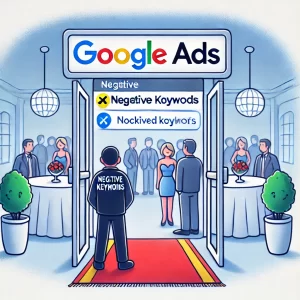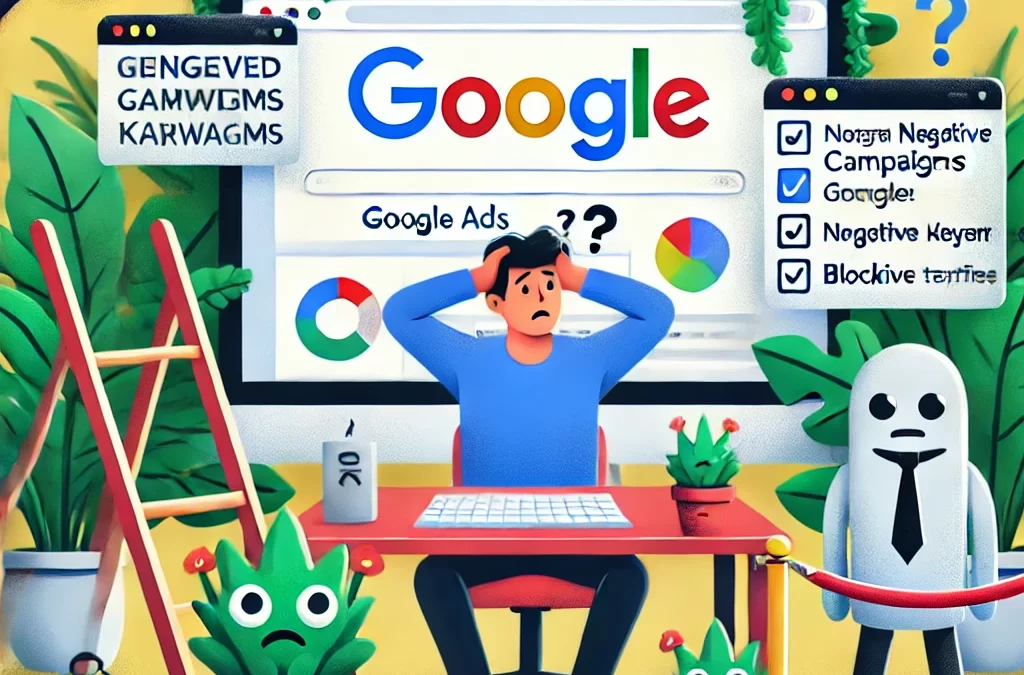Running Google Ads can feel a bit like trying to bake a soufflé for the first time. You’ve got all the ingredients, you’ve followed the instructions, but somehow, it still deflates when you open the oven. If you’ve ever stared at your Google Ads dashboard, wondering where things went wrong, you’re not alone. Many businesses dive into the world of PPC (pay-per-click) advertising with high hopes, only to end up with lackluster results and a significantly lighter wallet. But fear not! In this post, we’ll explore the top five mistakes businesses make with Google Ads and, more importantly, how you can avoid them. So, grab your whisk, because we’re about to whip your Google Ads strategy into shape.
1. Setting It and Forgetting It
Let’s start with one of the most common (and expensive) mistakes: the “set it and forget it” mentality. Some business owners and marketers set up their Google Ads campaigns, turn them on, and then sit back with a cup of coffee, waiting for the leads to roll in. Spoiler alert: they don’t.
Google Ads isn’t a crockpot—you can’t just set it and walk away. It requires constant monitoring and tweaking to get the best results. Ad performance can change daily, and what worked last week might not work today. Keywords might start costing more, your click-through rate could plummet, or your ads might stop showing altogether.
How to Avoid This: Treat your Google Ads like a high-maintenance plant. Check on it daily, make adjustments, and keep an eye on the numbers. Regularly review your keyword bids, ad copy, and landing pages. This proactive approach will help you catch issues early and optimize your campaigns for better performance.
2. Ignoring Negative Keywords
Negative keywords are like the bouncers at your Google Ads party—they keep out the riffraff. Unfortunately, many businesses overlook the importance of negative keywords, which leads to wasted spend on irrelevant clicks. For example, if you’re selling luxury handbags, you don’t want your ad showing up for searches like “cheap knockoff bags.” That’s a one-way ticket to Budget-Burnville.
How to Avoid This: Take the time to research and build a list of negative keywords that you don’t want your ads to appear for. This list should be reviewed and updated regularly as you discover new search terms that aren’t relevant to your business. By filtering out the unwanted traffic, you’ll save money and improve the quality of the clicks you do get.

3. Neglecting Ad Copy Testing
If you’re running the same ad copy month after month without testing new variations, you’re missing out on opportunities to improve your click-through rate (CTR). Imagine if your favorite TV show never changed its plotlines—eventually, you’d get bored and tune out. The same goes for your audience. They crave fresh, engaging content that speaks to them.
How to Avoid This: Run A/B tests on your ad copy regularly. Try different headlines, calls to action, and even emotional appeals to see what resonates with your audience. Small changes, like tweaking a headline or swapping out a keyword, can lead to big improvements in performance. And don’t be afraid to get creative—sometimes, the unexpected can yield the best results.
4. Sending Traffic to a Generic Landing Page
Imagine clicking on an ad promising “50% off luxury sneakers” only to be taken to a generic homepage with no mention of the sale. You’d probably bounce faster than a kid on a trampoline. This is exactly what happens when you send your Google Ads traffic to a generic landing page. Your ad promised one thing, but your landing page delivered something entirely different.
How to Avoid This: Ensure that each ad has a corresponding landing page that matches the message and intent of the ad. If you’re running an ad for a specific promotion or product, make sure the landing page highlights that promotion or product front and center. This consistency will improve your conversion rate and keep your audience engaged. And remember, the landing page should be as user-friendly and straightforward as possible—no one wants to play hide-and-seek with your call-to-action button.
5. Failing to Track Conversions Properly
This one’s a real doozy. You might be getting tons of clicks, but if you’re not tracking conversions properly, you have no idea whether those clicks are turning into sales, leads, or just empty promises. It’s like throwing a party and not counting how many people actually show up—sure, you had fun, but did you really achieve your goal?
How to Avoid This: Set up conversion tracking from the get-go. This could be tracking form submissions, phone calls, online purchases, or any other action that’s valuable to your business. Google Ads provides powerful tools to track these conversions, and without them, you’re flying blind. Once you have conversion tracking in place, you can analyze which ads, keywords, and audiences are driving the most value and optimize accordingly.

Wrapping It Up (Without the Soufflé Collapse)
Google Ads can be a powerful tool for driving traffic and sales, but only if you use it correctly. By avoiding these common mistakes, you’ll be well on your way to creating campaigns that don’t just attract clicks—they convert them into real business results. So, roll up your sleeves, get in there, and start optimizing. And remember, if you ever feel like you’re in over your head, UpShore Agency is here to help. We’ve seen it all, and we’ve got the whisk (and the Google Ads expertise) to whip your campaigns into shape. Cheers to better ads and better results!

